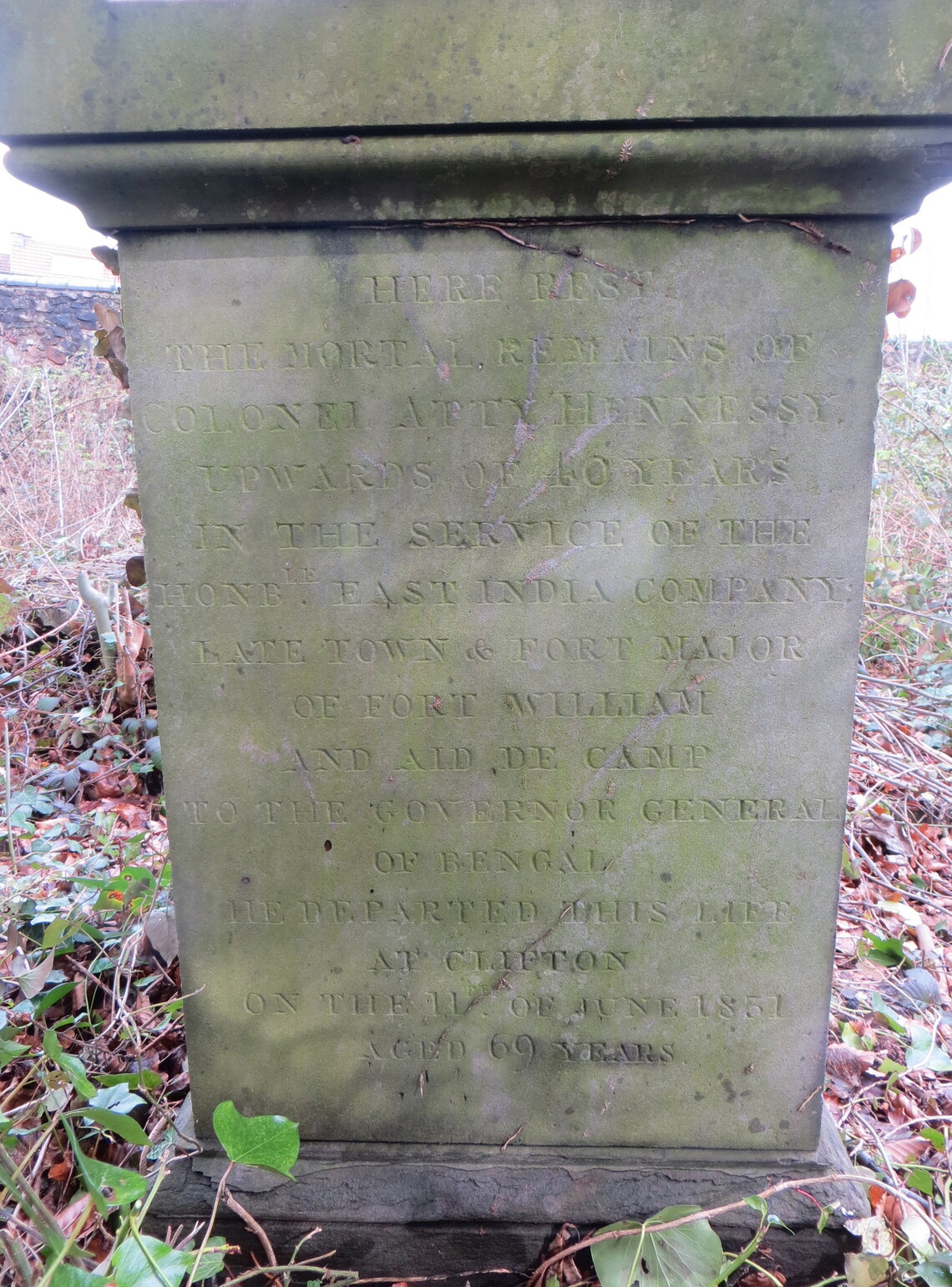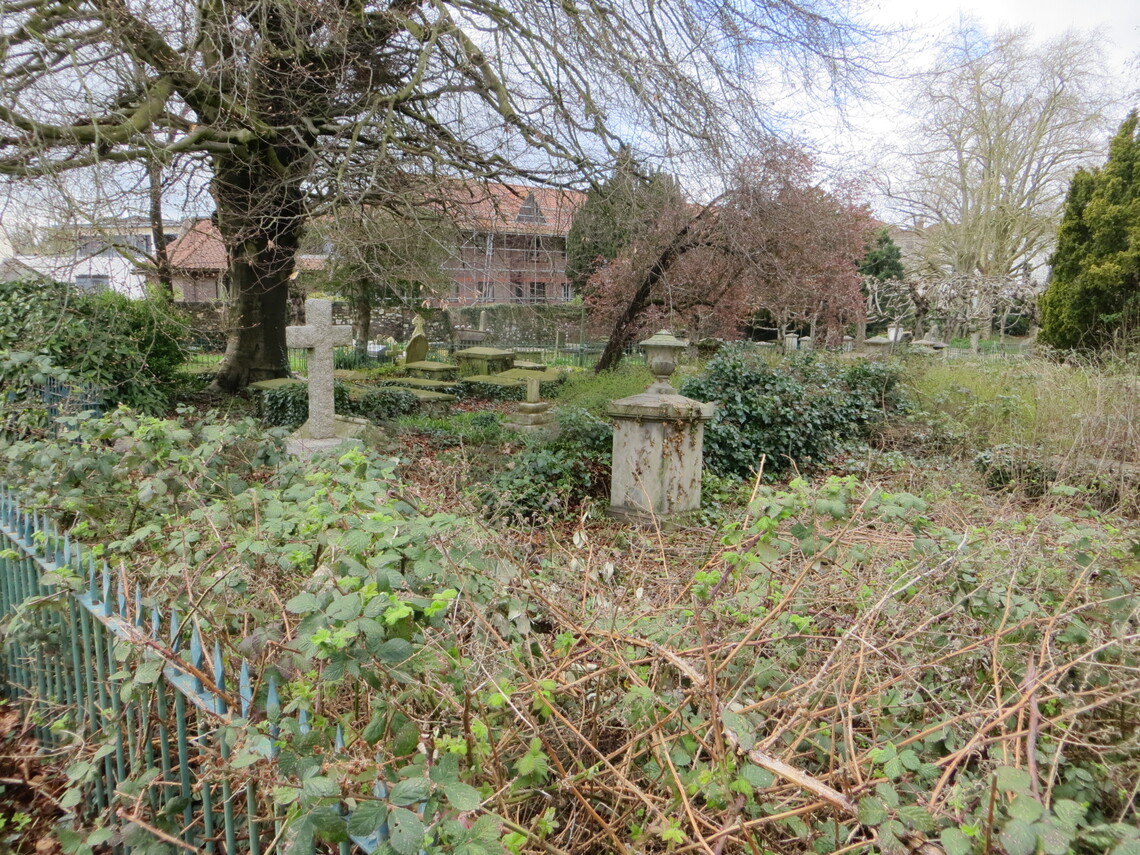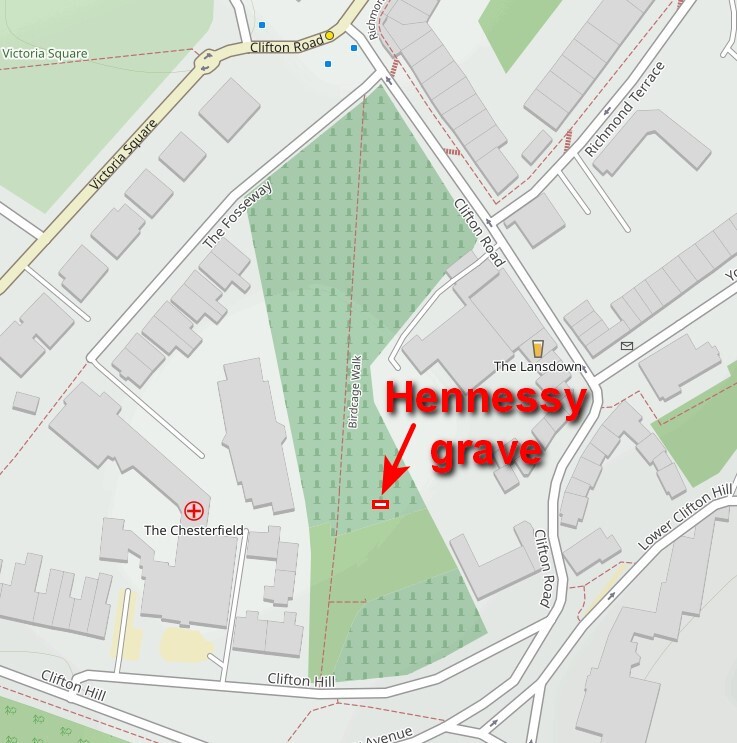With victory at the Battle of Plassey in 1757, the East India Company won control of Bengal, the wealthiest region in the Mughal empire and the single most important source of goods in Asia. No longer just one of several European trading organisations competing for Indian products and markets, the Company set about protecting its position and rapidly expanded its private army. Among the new officer cadets sailing for Bengal in 1782 was Atty Hennessy, a 20 year old Irishman, who nearly fifty years later would be buried in the shadow of St Andrew’s Church.
Arriving in Calcutta at the end of a six month voyage, Atty Hennessy and his fellow recruits were temporarily housed at Fort William - the stronghold of British rule in India - before being posted across Bengal. Made a Second Lieutenant in the Bengal Native Infantry in 1783, Hennessy rose steadily up the promotion ladder until he retired as a Lieutenant Colonel in 1822. During this period he was both Town Major of Fort William and aide-de-camp to the Governor General of Bengal, two appointments he specified for inclusion on his epitaph.
Late eighteenth century India was known as ‘the land of the pagoda tree’, which only had to be shaken to rain money. It was a time of asset stripping and plunder, a practise that became so notorious that it inspired Wilkie Collins’ novel The Moonstone (1868). The story opens with the violent theft of “a Yellow Diamond, a gem famous in the native annals of India” by John Herncastle, a British army officer at the storming of Seringapatam during the fourth Anglo-Mysore War in 1799. The diamond, known as The Moonstone, brings bad luck and death to almost everyone associated with it until seized back by its mysterious Indian guardians.
Having served in many of the East India Company wars, Atty Hennessy must have given the pagoda tree a good shake, because like many other Indian Army officers, he retired to fashionable Clifton a rich man. When he died in 1831, he left generous legacies to his sister, Georgina, wife of John Coxon of Flesk Priory, Co. Kerry, as well as to their daughters and younger sons, each of whom would have been able to live comfortably on their inheritance for the rest of their lives.
Atty Hennessy was buried in a prime position next to St Andrew’s Church and his memorial, a classical pillar and urn in the south east corner of the graveyard, is one of the most elegant on either side of Birdcage Walk.
Hennessy grave
Hennessy west side inscription detail
General view from the south
Location of grave in the churchyard - the grave is best viewed from the old church site to the south. Be warned that walking among the crowded gravestones is muddy and slippy underfoot, with many potential trip hazards.



